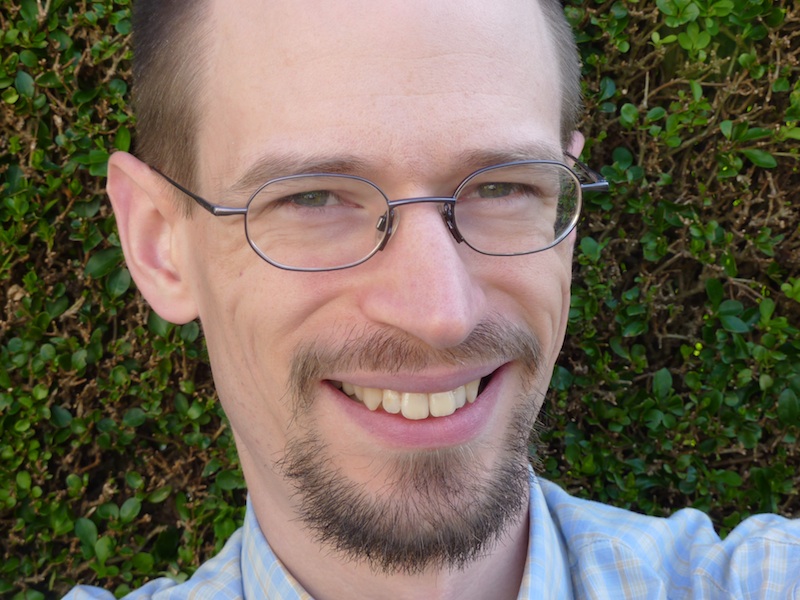Keynote Speakers
 | Pat HANRAHAN | Canon Professor of Computer Science and Electrical Engineering Emeritus | Stanford University (USA) |
|---|---|
| Short Biography | Pat Hanrahan is the Canon Professor of Computer Science and Electrical Engineering Emeritus at Stanford University. As a founding employee at Pixar Animation Studios, Hanrahan led the design of RenderMan. Hanrahan served as a co-founder and CTO of Tableau Software. He has received three Academy Awards for Science and Technology, the SIGGRAPH Computer Graphics Achievement Award, the SIGGRAPH Stephen A. Coons Award, and the IEEE Visualization Career Award. He is a member of the National Academy of Engineering and the American Academy of Arts and Sciences. In 2019, he received the ACM A. M. Turing Award. |
| Title | On Notation |
| Summary | This talk is a follow-on to my Eurovis 2009 Keynote titled "Systems of Thought". A system of thought is a set of concepts and representations that help us efficiently structure our thinking. In that talk I described different linguistic, mathematical, computational, and visual representations; and compared their advantages and disadvantages. The best representations are easy to understand and easy to manipulate. Expert problem solvers know how to pick the best representations for solving the problem at hand, and often use multiple representations synergistically. In this talk I will drill down into "notation". I will examine mathematical notation and compare it to the notation used in programming languages. Mathematical notation is expressive, but imprecise. Programming languages utilize a precise notation, but it is very limited. Domain specific languages should include both a rich semantics and an expressive notation. The title of this talk was inspired by Ken Iverson's Turing Award Lecture and paper with the same title. |
 | Eva HORNECKER | Professor in Human-Computer Interaction | Bauhaus-Universität Weimar (Germany) |
| Short Biography | Eva Hornecker is a Professor in Human-Computer Interaction at Bauhaus-Universität Weimar, Germany. Her work is located at the intersection between technology, design, and the social sciences. Before coming to Weimar in 2013, she taught and researched at the University of Strathclyde, Scotland and the Austrian TU Vienna and has been a PostDoc at the Open University, UK, the University of Sussex, UK, and at HitLabNZ in New Zealand, following her PhD at the University of Bremen, Germany. She co-founded the ACM TEI conference and introduced a framework on tangible and embodied interaction that is widely received. Nowadays, her research goes beyond tangible interfaces, but continues to focus on anything that is not classical desktop computing, but embodied, material, or embedded in physical environments - which includes data physicalisation. Her group utilizes mainly qualitative methods of enquiry and Research Through Design approaches. She is a Distinguished Member of the ACM for her contributions to the TEI community and currently serves on the ACM SigCHI Lifetime Awards committee. |
| Title | Data Physicalisation and Sensification - How Explorative Research Led to a Design Vocabulary for Physicalisation |
| Summary | Representing data in other than just visual form appears to foster higher affective engagement, which motivates research on Data Physicalisation and Sensification. My team has explored this both via creative designerly approaches and user studies, in teaching and research, aiming to understand this novel design space and its implications for data meaning-making. In my talk, I will discuss how our work, experiences made ,and inspirations from the works of others informed development of a design vocabulary for Physicalisation. In trying to systematize the design space of Physicalisation, we realized that finding physical analogues to InfoViz's visual variables is not enough. This is partially due to Physicalisation’s embodied and situated nature. There are also new opportunities, when sensifications only reveal the data IN direct interaction via kinesthetic perception. My talk aims to give insight into our thinking and to illustrate some of these central points. |
WORKSHOP EuroVa
Invited Speaker
 | Prof. Tim Dwyer BSc BCS(Hons) PhD Faculty of IT Monash University Australia |
|---|---|
| Short Biography |
Tim Dwyer is a Professor of Computer Science with the Department of Human-Centred Computing at Monash University, Faculty of IT. He directs the Embodied Visualisation Research Group at Monash. In 2023 he was general chair of the IEEE Visualisation conference. He has been named Australia's field lead for Computer Graphics by The Australian newspaper's Research Magazine 2018-2024. |
| Title | Emerging topics in Visual and Immersive Analytics |
| Summary | I will give a brief overview of interesting new directions in research in Data Visualisation (generally making visual representations of complex data and information) and Immersive Analytics (the use of emerging immersive and embodied display and interaction technologies to enable exploration of data). Particular topics we will introduce include visualisation of narratives extracted from text using large-language models as well as mixed-reality (MR) support for insitu data analytics and automation in workplaces with complex physical constraints, such as construction site safety inspections and cause of death investigations including autopsy and crime-scene investigation. [Spoiler alert] MR brings rich digital information to workplaces and tasks where previously data analytics was impossible to access in real-time and advances in visualisation and human-centred AI are key to in-situ decision support. |
WORKSHOP MLvis
Invited speaker
 | John Lee, UCLouvain Professor, FNRS Research Director |
|---|---|
| Short Biography | John Aldo Lee was born in 1976 in Brussels, Belgium. He received the M.Sc. degree in Applied Sciences (Computer Engineering) in 1999 and the Ph.D. degree in Applied Sciences (Machine Learning) in 2003, both from the Université catholique de Louvain (UCL, Louvain-la-Neuve, Belgium). He is currently a Research Director with the Belgian fund of scientific research (Fonds de la Recherche Scientifique, F.R.S.-FNRS). During several postdocs, he developed specific image enhancement techniques for positron emission tomography in the Centre for Molecular Imaging and Experimental Radiotherapy of the Saint-Luc University Hospital (Belgium). He is also an active member of the UCL Machine Learning Group, with research interests focusing on data visualization, dimensionality reduction, neighbor embedding, intrinsic dimensionality estimation, clustering, and image processing. John A. Lee is currently the head of the center MIRO (Molecular Imaging, Radiotherapy, and Oncology) in UCLouvain Brussels. His team activities are aimed at image-guided treatment planning in radiation oncology and particle therapy. This includes adaptive treatments, motion management, image registration, AI-based automatic organ segmentation and dose prediction, as well as Monte Carlo simulations for proton therapy, robustness analysis, robust planning, and planning for non-conventional delivery techniques like arc proton therapy. |
| Title | Dimensionality reduction for visualisation: can we go beyond neighbour embedding? |
| Summary | Since 2008 and the advent of t-SNE, the domain of dimensionality reduction has undergone a paradigm shift. Previous approaches to project data, like principal component analysis, or to embed data based on distance preservation, like multidimensional scaling, can hardly compete with t-SNE or its closely related variants such as UMAP. The paradigm of t-SNE is to preserve neighbourhoods of points from the data space to the visualisation space, instead of distances, and t-SNE stands for t-distributed stochastic neighbour embedding. In fact, t-SNE is packed with counter-intuitive empirical tweaks and their theoretical understanding is still work in progress. Immunity against distance concentration and a strong inductive bias towards cluster formation have made t-SNE an extremely useful tool for visualisation in various applications domains, like cell biology. However, t-SNE suffers from a few rare drawbacks, like its poor preservation of global structure, fragmentation of clusters, or complicated hyper-parameterisation. In addition to analysing t-SNE, we will present some recent developments that might improve t-SNE or, alternatively, rehabilitate other simpler paradigms of dimensionality reduction, like multi-dimensional scaling. |
WORKSHOP EGPGV
Invited speaker
 | François Mazen Director - Scientific Visualization Europe, Kitware |
|---|---|
| Short Biography | François Mazen is the Director for the Scientific Visualization team at Kitware Europe. Throughout his career, he has focused on developing software solutions for scientific communities from research to industry. This topic includes numerical simulation methods, performance, Artificial Intelligence and large software architectures. François is an open source enthusiast as he has been contributing to several open source softwares, like the Debian Operating System. Since 2021 he has led Kitware’s European Scientific Visualization team, including team management, strategy, technical expertise, operational excellence and business development. He co-chairs the International Workshop on In Situ Visualization (WOIV) since 2024 and he is frequently invited to talk at prestigious conferences related to HPC and Visualization. |
| Title | Challenges of Data Analysis and Visualization at Exascale |
| Summary | With the advent of exascale supercomputers, analyzing the results of numerical simulations has brought new visualization challenges, whether in terms of data size, hybrid hardware architectures, ray tracing rendering libraries, or progressive analysis. This presentation will take stock of these new scientific visualization challenges in the exascale era where GPU computing becomes the state of the art. We will analyse the current possible responses to these challenges (Viskores, ANARI, WebGPU, in situ GPU memory resident workflows...), and Kitware's vision in this field. |
WORKSHOP EnvirVIS
Invited speaker
 | Marc Rautenhaus | Univeristät Hamburg, RRZ, Visual Data Analysis Group |
|---|---|
| Short Biography | Marc Rautenhaus leads the Visual Data Analysis Group at the Regional Computing Centre of Universität Hamburg. His research interests lie at the intersection of visual computing and weather and climate research, focussing on interactive 3-D visualization, feature detection, weather forecasting, and research software development of the meteorological interactive 3-D ensemble visualization framework Met.3D. He holds a master’s degree in Atmospheric Science from the University of British Columbia, Canada, and a PhD in Computer Science from the Technical University of Munich. Previous posts include researcher/postdoc positions at the German Aerospace Centre (DLR) and the Technical University of Munich. |
| Title | Advancing Meteorological Analysis through Interactive 3D Visualization: The Met.3D Open Research Software |
| Summary |
|
WORKSHOP VisGap
Invited speaker
Kresimir MatkovicR | Researcher | VRVis Research Center
| |
|---|---|
| Short Biography | Krešimir Matković is a senior researcher at VRVis Research Center (www.vrvis.at). He received his PhD from TU Wien in 1998, and habilitation from the same University in January 2016. He has a strong background in the visualization of complex data, spanning from engineering applications to cutting-edge research. He is particularly interested in extending visual analysis technology to complex heterogeneous data, especially the integration of multivariate data with more advanced data types, such as functions. His research also focuses on developing a structured model for interactive visual analysis that enables a seamless synergy between user interaction and computational analysis. He has successfully collaborated with numerous scientists and experts across various domains. Krešimir Matković applies Visual Analytics to different fields, such as engineering, medicine, geo-temporal data, or scientific computing, for example. At VRVis, Krešimir Matković leads both basic and applied research projects. Actively engaged in the scientific community, he serves as an associate editor of the Computer Graphics Forum journal, co-chairs IEEE Visualization 2025—the premier annual conference in the field—and participates in numerous program committees. He teaches at TU Wien and the University of Zagreb. |
| Title | TBD |
| Summary |
|